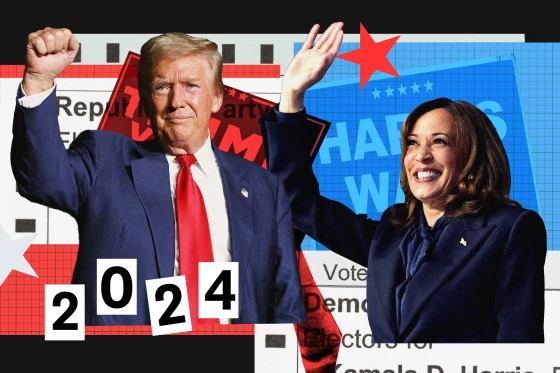A New Generation Means a New Marketing Strategy: The Trump and Harris Campaigns
A New Generation Means a New Marketing Strategy: The Trump and Harris Campaigns
Credit: (Krakower, 2024)
Background of Political Social Media Tactics
Social media has become essential in political campaigns, with politicians using platforms like TikTok, Instagram, and X (formerly Twitter) to engage with voters. Kamala Harris and Donald Trump each employ distinct social media strategies, targeting different demographics in order to achieve their campaign goals.
Kamala Harris: Engaging Gen Z Through TikTok
Credit: (Demopoulos, 2024)
Kamala Harris’s campaign team, known as “KamalaHQ”, has embraced platforms like TikTok to connect with younger voters. This strategy involves regularly posting about Harris’s policies and critiquing Trump’s, while using trending songs and viral challenges to capture the attention of Gen Z. By participating in trends, her campaign aims to engage young voters and create a sense of relatability on her social media platforms. With the rise of technology, Gen Z relies on quick, engaging visuals and brief content to consume information – even about complex topics like politics. These viral posts have flooded young people’s feeds, placing Harris in the spotlight and depicting her as relatable, understanding, and empathetic towards younger generations. One of the most notable movements from “KamalaHQ” centers around the rise of singer Charli XCX’s “brat” album. This association, easily recognizable by its signature chartreuse color, has become a symbol of Harris’s campaign. After acknowledging the Vice President’s involvement with her music, Charli XCX tweeted, “Kamala IS brat.” This lighthearted interaction from a well-known artist in the Gen Z community not only enhances Harris’s cultural relevance among younger voters, but also promotes political engagement, showcasing how pop culture can combine with political messaging to motivate Gen Z to take an interest in civic matters.
Harris’s team posts multiple times a day, quickly responding to trends to stay relevant and connected with the fast-paced nature of Gen Z’s social media habits. This tactic reflects Harris’s commitment to directly engaging young people in the political climate, fostering a sense of relatability. Campaign strategist Lauren Kapp noted, “The vice president has a lot of trust in young people, specifically Gen Z” (Schlossberg, 2024). Ultimately, by leveraging social media in creative ways, Harris’s campaign aims to not only increase her visibility, but also empower a generation to actively engage with the future of politics.
Credit: (Andrews, 2020)
Donald Trump: Direct Communication on X to Effectively Send Messages
Contrastingly, Donald Trump utilizes X to deliver direct messages relating to his policies, criticisms toward other individuals or countries, and comments on global issues. Over Trump’s political career, his X account has become a base that intrigues people of all ages and demographics – whether for humorous or genuine interest – prompting reactions like, “Did you see what the president tweeted?… At some point since the inauguration, furious or elated, you probably uttered those words” (Andrews, 2020). The widespread acknowledgement of Trump’s ongoing involvement on X has allowed him to communicate far-reaching messages – an effective and strategic campaign tactic that consolidates his personal insights onto a single platform. Despite facing criticism and accusations of spreading fake news, Trump’s tweets have attracted a diverse group. However, his most admirable supporters tend to be a loyal, conservative audience that appreciates his direct and blunt communication style.
On January 3, 2017, before he was even president, Trump posted a tweet threatening General Motors (GM) for sending Mexican-made models of the Chevy Cruze to U.S. car dealers without incurring taxes (pictured above). After this was posted, “Google searches for GM shot up 200 percent, while the company’s stock value declined by 24 cents, a 0.70 percent drop thanks to 26 words” (Andrews, 2020). This example shows how Trump’s presence on X facilitates efficient and direct communication, particularly resonating with older voters who value straightforward, immediate updates, and take the time to engage with his messages. However, his posts often receive mixed reactions, strengthening support among his core followers while also creating division among broader audiences.
Comparing the Impact and Effectiveness of Tactics
While Harris’s approach helps to generate positive engagement among younger voters, encouraging them to participate in political processes, Trump’s strategy reinforces loyalty but may turn away undecided voters. Harris’s trend-based, visual content aligns with Gen Z’s values of authenticity and instant engagement, making it an effective tool for encouraging new voters. Conversely, Trump’s posts aim to strengthen his current supporters, which helps maintain his loyal base, but may reduce his overall appeal as his messages can be divisive. Ultimately, Kamala Harris and Donald Trump’s social media campaigns highlight the contrasting ways politicians can leverage platforms to reach their audiences.
